Silver Washed Fritillary Butterfly - Argynnis paphia
Phylum: Arthropoda - Class: Insecta - Order: Lepidoptera - Family: Nymphalidae
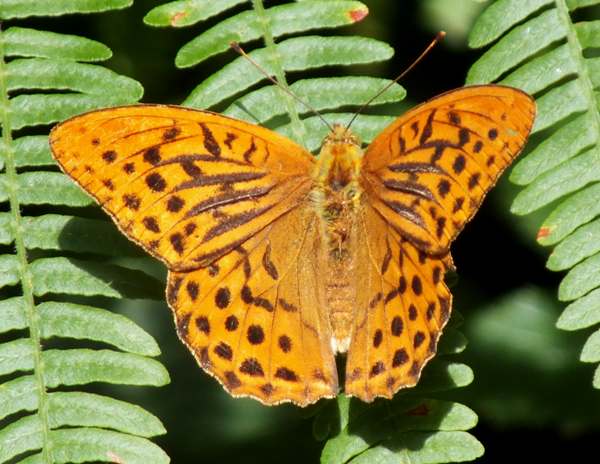
This large fritillary (a male is shown above) hasdistinctively pointed wings and is a strong flier; it loves sunny woodland glades, fire breaks and rides, although its breeding habitat is generally in shaded broadleaf woodland areas where its preferred larval food plant, the Dog Violet Viola riviniana, is most commonly found.
Description
The Silver Washed Fritillary gets its name from the colouring of the undersides of its wings, which are decorated with large silvery streaks. Its wingspan range is 7 to 8cm, with the females usually somewhat larger than the males.
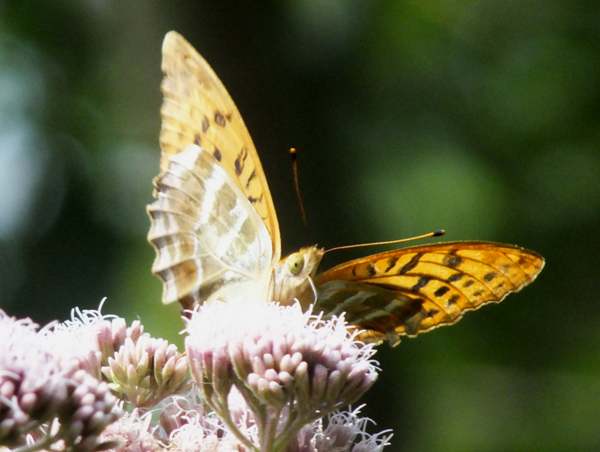
The silvering on the underwings plus the sharply pointed wings are enough to separate this large fritillary from any others found in Britain and Europe. A female is pictured below:
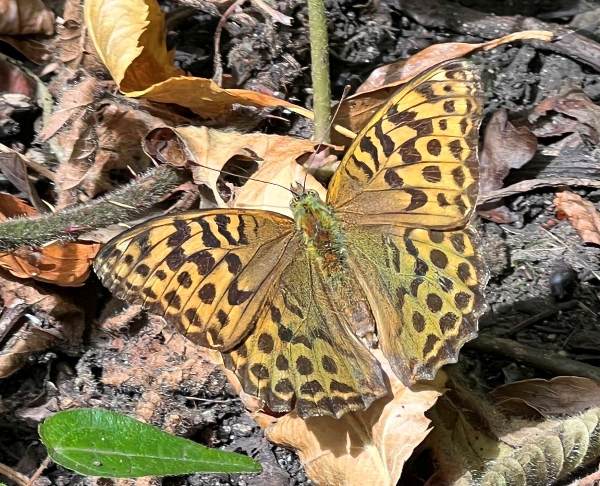
Distribution
In Britain the Silver Washed Fritillary is mainly concentrated in the south of England and Wales, while the further north you go beyond central England the less frequently these butterflies are likely to be seen. The mating pair shown on this page were photographed in the New Forest, in Hampshire, England.
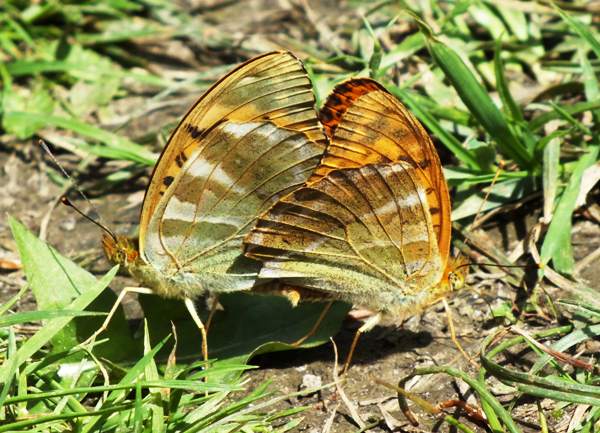
Elsewhere the range of the Silver Washed Fritillary is very wide, covering mainland Europe, northern Africa and much of Asia including Japan.
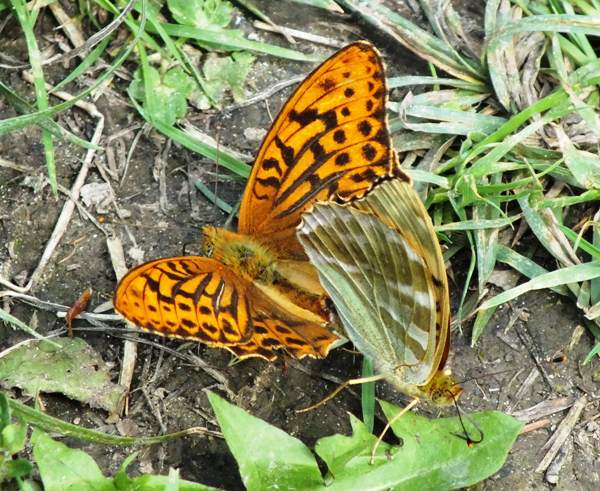
Lifecycle
In July and early August the Silver Washed Fritillaries lay their eggs generally in bark crevices of trees near to the larval foodplants, violets (Viola species) including, particularly on woodland edges, the Dog Violet Viola riviniana.
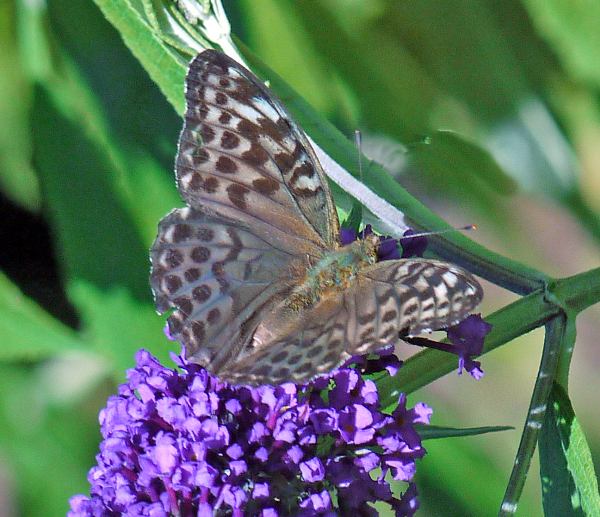
The Valezina form of the Silver-washed Fritillary - a female is shown above and another in the picture below - has more muted upperwing colours with a olive-green tinge.
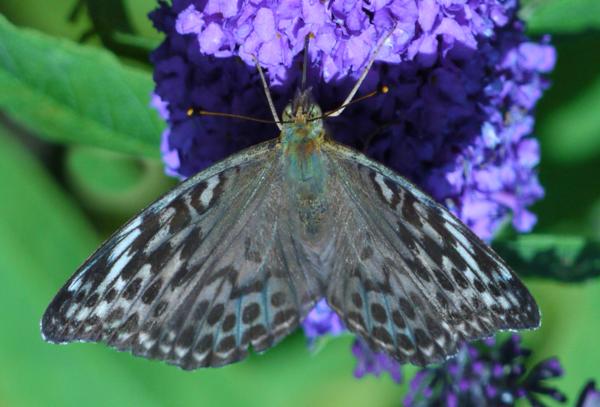
Above: a female of the 'Valezina' form of Silver-washed Fritillary.
In August the eggs hatch and the larvae eat the empty eggshells and then go into hibernation until the following March. When they wake up, the caterpillars, which are black-brown with two yellow lines along their backs and a covering of long reddish-brown spines, drop to the woodland floor and feed on violet leaves until some time in May or early June (depending on altitude and longitude); then they pupate.
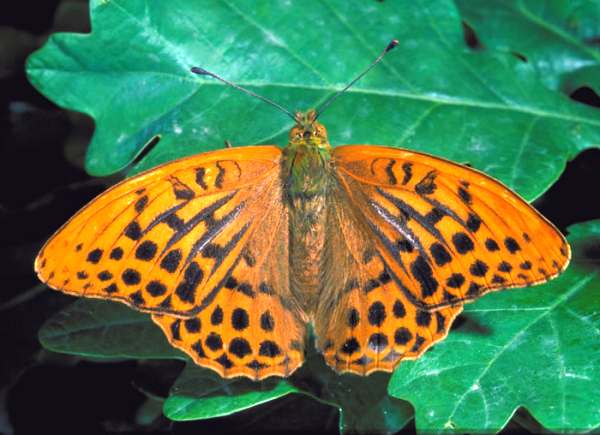
Adult Silver Washed Fritillaries take nectar from various woodland edge plants including brambles, thistle, and knapweeds; they also feed upon aphid honeydew.
Acknowledgements
This page includes pictures kindly contributed by the Countryside Council for Wales, by Simon Harding, and by Betty and Tony Rackham.
Studying butterflies and moths...
Excited at the prospect of flyfishing? So are we, and we're pretty sure you would find the Winding River Mystery trilogy of action-packed thrillers gripping reading too. Dead Drift, Dead Cert, and Dead End are Pat O'Reilly's latest river-and-flyfishing based novels, and now they are available in ebook format. Full details on our website here...
Buy each book for just £4.96 on Amazon...
Please Help Us: If you have found this information interesting and useful, please consider helping to keep First Nature online by making a small donation towards the web hosting and internet costs.
Any donations over and above the essential running costs will help support the conservation work of Plantlife, the Rivers Trust and charitable botanic gardens - as do author royalties and publisher proceeds from books by Pat and Sue.
